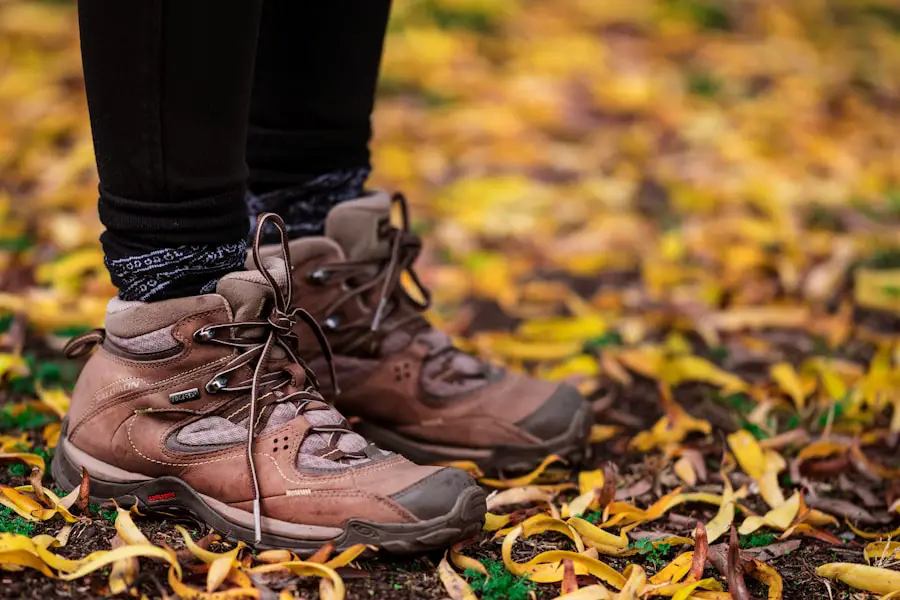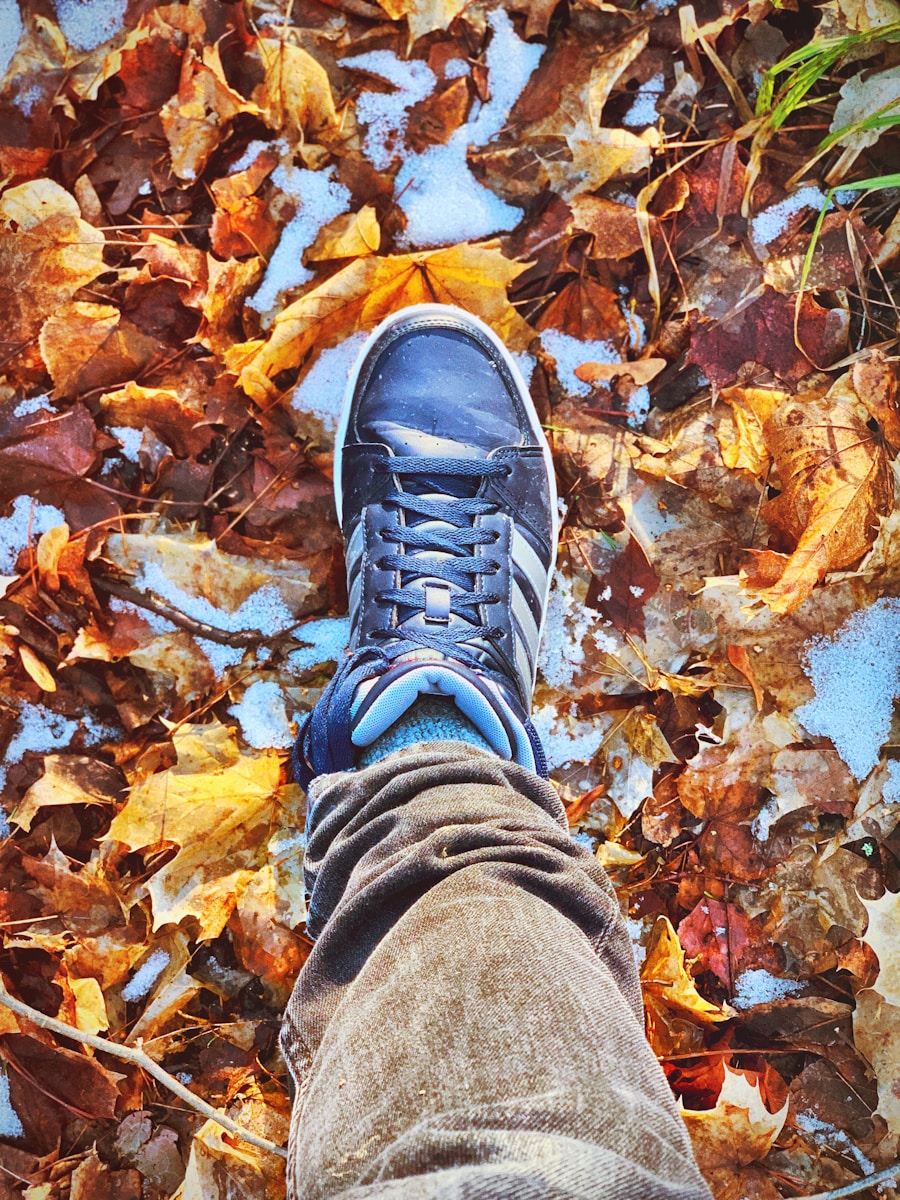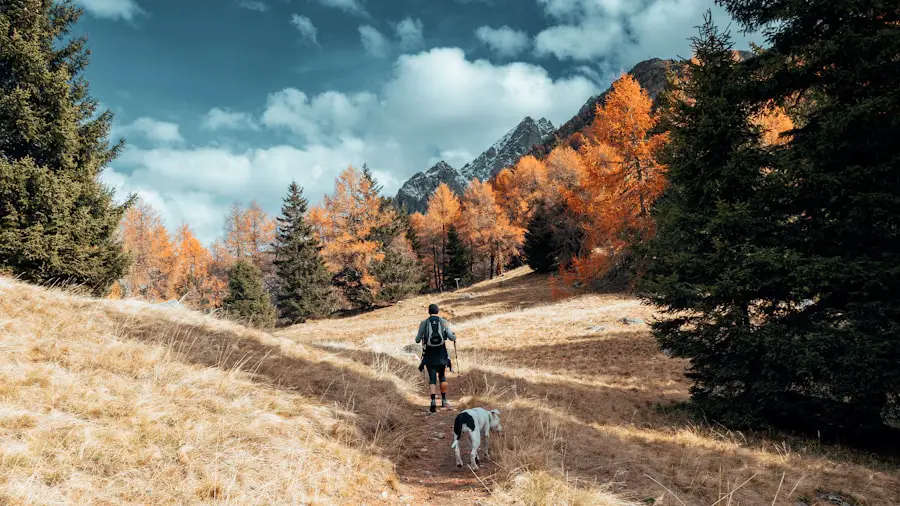Layering is a fundamental principle of dressing for varying weather conditions, particularly when engaging in outdoor activities. The concept revolves around wearing multiple layers of clothing that can be added or removed as temperatures fluctuate throughout the day. The base layer, which is the first layer worn against the skin, plays a crucial role in moisture management.
Fabrics such as merino wool or synthetic materials like polyester wick sweat away from the body, keeping you dry and comfortable. This is especially important during physical activities, where perspiration can lead to chilling if it remains trapped against the skin. The middle layer serves as insulation, retaining body heat while allowing moisture to escape.
Fleece jackets or down vests are popular choices for this layer, as they provide warmth without adding excessive bulk. The outer layer, often referred to as a shell, protects against wind, rain, and snow. Materials like Gore-Tex or other waterproof fabrics are ideal for this purpose, as they offer breathability while keeping the elements at bay.
By carefully selecting each layer based on the weather forecast and the intensity of your activity, you can ensure that you remain comfortable and protected throughout your outdoor adventures.
Key Takeaways
- Layering is essential for staying comfortable in changing weather conditions
- Choose footwear that is appropriate for the terrain and weather
- Protect your head and hands with hats, gloves, and other accessories
- Pack accessories like sunglasses, sunscreen, and a first aid kit
- Consider waterproof gear to stay dry in wet conditions
- Select bottoms that are suitable for the activities and weather
- Bring a backpack to carry essentials and keep your hands free
- Dress in bright colors and reflective materials for safety and visibility
Choosing the Right Footwear
Footwear is a critical component of any outdoor outfit, as it directly impacts comfort and performance. The right shoes or boots can make a significant difference in how you experience your time outdoors. When selecting footwear, consider the terrain you will be traversing.
For hiking on rugged trails, sturdy hiking boots with good ankle support and a durable sole are essential. Look for features such as waterproofing and breathability to keep your feet dry and comfortable during long treks. In contrast, if your activities involve more casual walking or urban exploration, lightweight trail shoes or sneakers may suffice.
These options often provide adequate support while allowing for greater flexibility and comfort. Additionally, pay attention to the fit of your footwear; it should be snug but not overly tight, with enough room to accommodate thicker socks if necessary. Proper footwear not only enhances your performance but also helps prevent blisters and other foot-related issues that can arise during extended periods of activity.
Protecting Your Head and Hands

When preparing for outdoor activities, it is essential to consider how to protect your head and hands from the elements. A well-chosen hat can provide shade from the sun or warmth in colder conditions. For sunny days, a wide-brimmed hat made from breathable materials can shield your face and neck from harmful UV rays while keeping you cool.
On the other hand, during colder months, a beanie or insulated hat can help retain heat and prevent heat loss from the head, which is particularly important in frigid temperatures. Hand protection is equally vital, as our hands are often exposed to harsh conditions. In cold weather, insulated gloves or mittens are necessary to keep fingers warm and functional.
Look for options that offer dexterity if you need to perform tasks that require fine motor skills. In warmer climates, lightweight gloves can protect against sunburn or abrasions while providing a better grip on equipment. Additionally, consider using gloves with moisture-wicking properties to keep your hands dry during strenuous activities.
Packing the Right Accessories
| Accessory Type | Number Packed | Weight (lbs) |
|---|---|---|
| Socks | 5 pairs | 0.5 lbs |
| Belts | 2 | 0.3 lbs |
| Scarves | 3 | 0.7 lbs |
| Hats | 1 | 0.4 lbs |
Accessories can significantly enhance your outdoor experience by providing additional comfort and functionality. One essential accessory is a good pair of sunglasses, which protect your eyes from UV rays and reduce glare, especially in snowy or sandy environments where sunlight reflects off surfaces. Look for sunglasses with polarized lenses for optimal clarity and protection.
Another important accessory is a multifunctional scarf or buff that can serve various purposes. It can be worn around the neck for warmth, pulled up over the face for protection against wind and dust, or even used as a headband to keep sweat at bay during intense activities. Additionally, consider packing a lightweight pair of trekking poles if you plan on hiking; they can help reduce strain on your knees and improve stability on uneven terrain.
By thoughtfully selecting accessories that cater to your specific needs, you can enhance both comfort and performance during your outdoor excursions.
Considering Waterproof Gear
When venturing outdoors, especially in unpredictable weather conditions, waterproof gear becomes an indispensable part of your wardrobe. A high-quality waterproof jacket is essential for keeping you dry during rain showers or wet conditions. Look for jackets with sealed seams and adjustable hoods to ensure maximum protection against the elements.
Breathable fabrics are also crucial; they allow moisture from sweat to escape while preventing rain from penetrating the fabric. In addition to jackets, waterproof pants are another vital component of your outdoor gear. These pants not only keep you dry but also provide an extra layer of insulation against cold winds.
Many outdoor brands offer lightweight options that can be easily packed away when not in use. Furthermore, consider waterproof footwear if you anticipate walking through puddles or wet terrain; this will help keep your feet dry and comfortable throughout your adventure. Investing in quality waterproof gear ensures that you remain protected from unexpected weather changes, allowing you to focus on enjoying your time outdoors.
Selecting the Right Bottoms

Choosing the right bottoms for outdoor activities is crucial for comfort and mobility. The type of pants or shorts you select should align with both the climate and the nature of your activities. For cooler weather, consider wearing insulated or thermal pants that provide warmth without sacrificing flexibility.
Many outdoor brands offer options made from stretchy materials that allow for ease of movement while also being durable enough to withstand rough terrain. In warmer conditions, lightweight shorts made from quick-drying fabrics are ideal for keeping cool during physical exertion. Look for features such as pockets for convenience and adjustable waistbands for a better fit.
Additionally, consider convertible pants that can be zipped off into shorts; these versatile options adapt to changing temperatures throughout the day. Regardless of the type of bottoms you choose, ensure they fit well and allow for a full range of motion to enhance your overall experience during outdoor activities.
Bringing Along a Backpack
A well-designed backpack is an essential piece of gear for any outdoor adventure, providing a convenient way to carry all necessary items while keeping your hands free. When selecting a backpack, consider its size based on the duration of your outing; daypacks are suitable for short hikes or excursions, while larger backpacks are necessary for multi-day trips where more gear is required. Look for features such as padded shoulder straps and a hip belt to distribute weight evenly across your body, reducing strain during long treks.
Additionally, consider the organization of the backpack’s compartments; having designated pockets for water bottles, snacks, and gear can make accessing items easier while on the move. Hydration reservoirs or built-in water bottle holders are also beneficial features that encourage proper hydration during physical activities. A rain cover is another practical addition that protects your belongings from unexpected downpours.
By choosing a backpack that meets your specific needs and preferences, you can ensure that you have everything necessary for a successful outdoor experience.
Dressing for Safety and Visibility
Safety should always be a priority when dressing for outdoor activities, particularly in environments where visibility may be compromised. Bright colors and reflective materials are essential for ensuring that you are seen by others, especially in low-light conditions such as early morning or late evening excursions. Many outdoor clothing brands offer high-visibility options designed specifically for this purpose; these garments often incorporate reflective strips or panels that enhance visibility without sacrificing style.
In addition to color and reflectivity, consider wearing clothing with built-in safety features such as pockets designed to securely hold essential items like identification or emergency supplies. If you’re hiking in areas frequented by vehicles or cyclists, wearing bright colors can significantly reduce the risk of accidents by making you more noticeable to others on the trail or roadways. By prioritizing safety in your clothing choices, you not only protect yourself but also contribute to a safer environment for everyone enjoying outdoor activities.
When planning what to wear hiking in autumn, it’s important to consider the functionality and comfort of your clothing. One essential item to consider is a good pair of traveler pants, which offer durability and flexibility for various outdoor activities. For those looking to enjoy a cigar while hiking, a travel humidor is a must-have accessory to keep your cigars fresh and protected. Additionally, for those who prefer to explore the trails on wheels, a travel scooter can provide convenience and ease of transportation. To learn more about the best options for traveler pants, travel humidors, and travel scooters, check out these articles: Traveler Pants, Best Travel Humidor, Best Travel Scooter.
FAQs
What should I wear for hiking in autumn?
In autumn, it’s important to dress in layers for hiking. Start with a moisture-wicking base layer, add a insulating layer, and finish with a waterproof and windproof outer layer.
What type of pants are best for autumn hiking?
For autumn hiking, it’s best to wear quick-drying and moisture-wicking pants. Consider wearing convertible pants that can be zipped off into shorts if the weather warms up.
What kind of footwear is suitable for autumn hiking?
Sturdy and waterproof hiking boots are ideal for autumn hiking. Look for boots with good ankle support and a grippy sole to navigate through wet and slippery terrain.
What accessories should I bring for autumn hiking?
It’s important to bring a hat, gloves, and a scarf for autumn hiking to protect against the cooler temperatures. Additionally, consider bringing a backpack with essentials like water, snacks, a map, and a first aid kit.
Are there any specific considerations for hiking in autumn?
In autumn, it’s important to be prepared for changing weather conditions. Be aware of shorter daylight hours and potential for sudden drops in temperature. It’s also important to be mindful of leaf-covered trails, which can be slippery.
